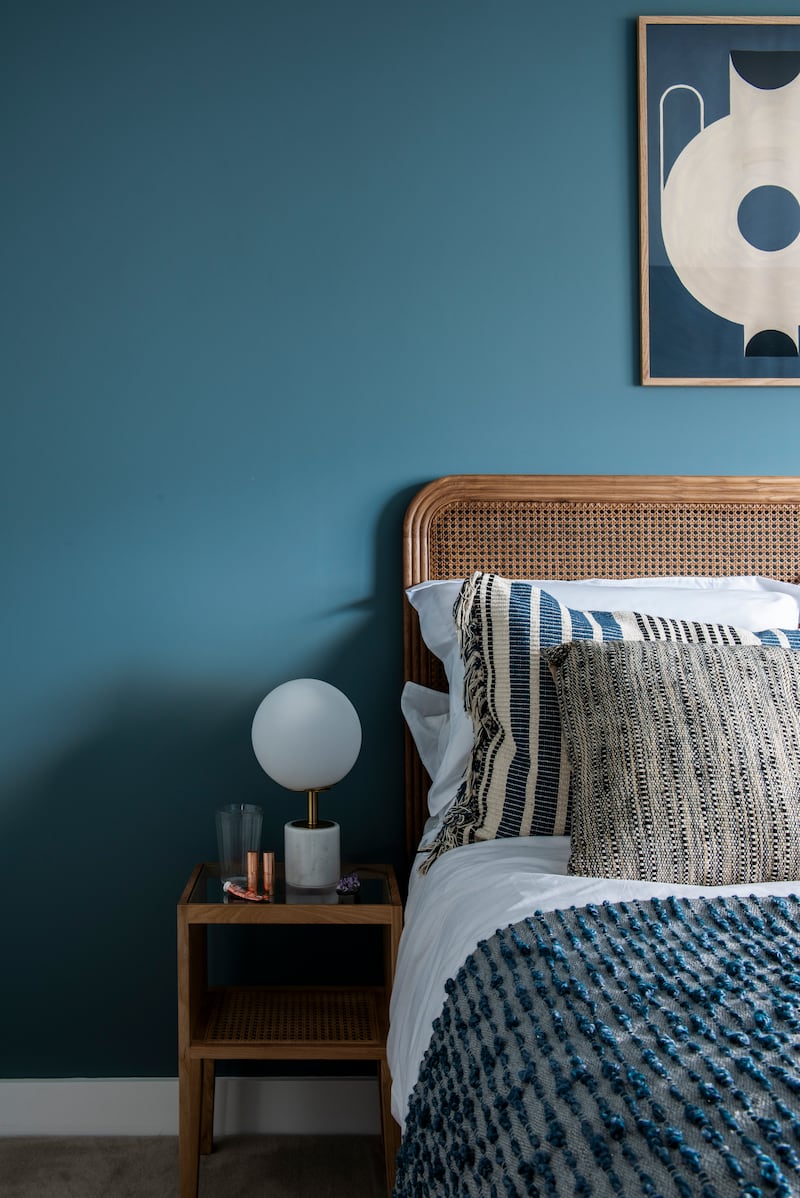You may or may not be familiar with the term dopamine dressing. It refers to the trend of wearing brighter colours during the more gloomy months to boost your mood and keep the winter blues at bay. While it might seem trivial, there is some merit to the idea. And just as wearing brighter colours can boost your mood during the winter months, incorporating specific colours into your home can enhance your emotional wellbeing and create a more uplifting atmosphere. Here’s a look at the science behind “dopamine decorating”, and some practical tips to try in your home.
The science
Dopamine is a neurotransmitter that plays a significant role in regulating mood, motivation and emotion. Dopamine decorating is based on using specific colours and design elements to stimulate dopamine production and encourage positive emotions.
Colour psychology, which studies the impact of colours on our emotions and behaviour, is central to dopamine decorating. Research has demonstrated that certain colours stimulate dopamine release, improving mood and mental wellbeing. When selecting colours for your home, it is essential to consider the atmosphere you wish to create rather than focusing solely on aesthetic appeal. By prioritising how a colour makes you feel over how it looks, you can transform your home into a space that promotes positive emotions and supports overall emotional health.
Your personality should play a role in helping you choose the right mood-enhancing colours, too. For instance, if you enjoy entertaining or prefer socialising to spending time alone, you might gravitate toward vibrant and energetic colours that promote a lively and engaging atmosphere. However, if you value tranquillity and prefer a calm, relaxing environment, you might opt for softer, more soothing shades.
READ MORE
Choosing colours
Unlike dopamine dressing, dopamine decorating isn’t just about choosing bright and cheery shades for every room in the house. The intended use of a room should be your main consideration when selecting colours to boost your mood. For instance, if you’re choosing a colour for your bedroom, consider how it will impact your sleep quality. Vibrant colours can create a stimulating effect that could impede your ability to unwind. Warm, neutral tones, on the other hand, are best for promoting relaxation and tranquillity.
Other important factors to consider are the room’s natural light and the time of day you’ll be using the space. Natural light can significantly affect how paint colours appear, and some shades may not be appropriate for rooms with limited light. If you’re a regular reader, you’ll be familiar with this advice: for rooms with abundant natural light, avoid colours with hints of pink or peach, as they can be challenging to incorporate into a cohesive colour scheme. Instead, opt for shades with a subtle green undertone as they tend to neutralise other colours and complement the soft, indirect light often found in Irish climates.

Dopamine-boosting shades
One of the first questions we ask clients when discussing colour preferences is if there are any colours they particularly dislike. Surprisingly, purple often tops the list of colours to avoid. This highlights the importance of personal choice when choosing colours for your home, especially when trying to create a particular mood or atmosphere.
When choosing colours for a bedroom, opt for soft, muted shades with warm undertones, like sandy beige or sage green, to create a serene and calming atmosphere. Darker tones, such as dusky blues or rich burgundies, can also evoke a cosy and luxurious ambience. Avoid bright yellows, intense reds, and other bold, vibrant shades, as they may interfere with sleep quality.
To achieve a cohesive look, consider keeping the woodwork, windows, and ceiling in the same shade that contrasts but complements your chosen wall colour. Alternatively, you can try the trend of colour drenching, painting everything in the same shade for a luxurious statement. Colour drenching works particularly well with rich jewel tones like deep blues, greens and plum tones.
Feeling
To successfully integrate dopamine decorating into your home, start by exploring various colours and observing how they make you feel. Remember that individual experiences with colours may vary, so trust your instincts and preferences. Once you’ve identified a few colours that resonate with you, test them in the intended room and observe how they interact with natural and artificial light. Colours can appear dramatically different under various lighting conditions, so ensure you’re satisfied with the appearance in your specific space.
Once you’ve decided on your colours and finishes, gradually incorporate them into your home. Start with accents, such as a feature wall or chimney breast, to assess the impact on your mood before making more permanent changes. If you’re feeling more adventurous, consider painting a smaller room like a guest WC in a bold, dopamine-boosting shade to create a statement and add an element of surprise.
Whether you opt for the boldness of red or the tranquillity of turquoise, there are limitless possibilities for enhancing your home’s happiness quotient. Trust your instincts, experiment with different combinations, and create a space that looks beautiful and actively supports your emotional wellbeing. By following these guidelines, you’ll be on your way to designing a home that fosters positivity, happiness and relaxation.















